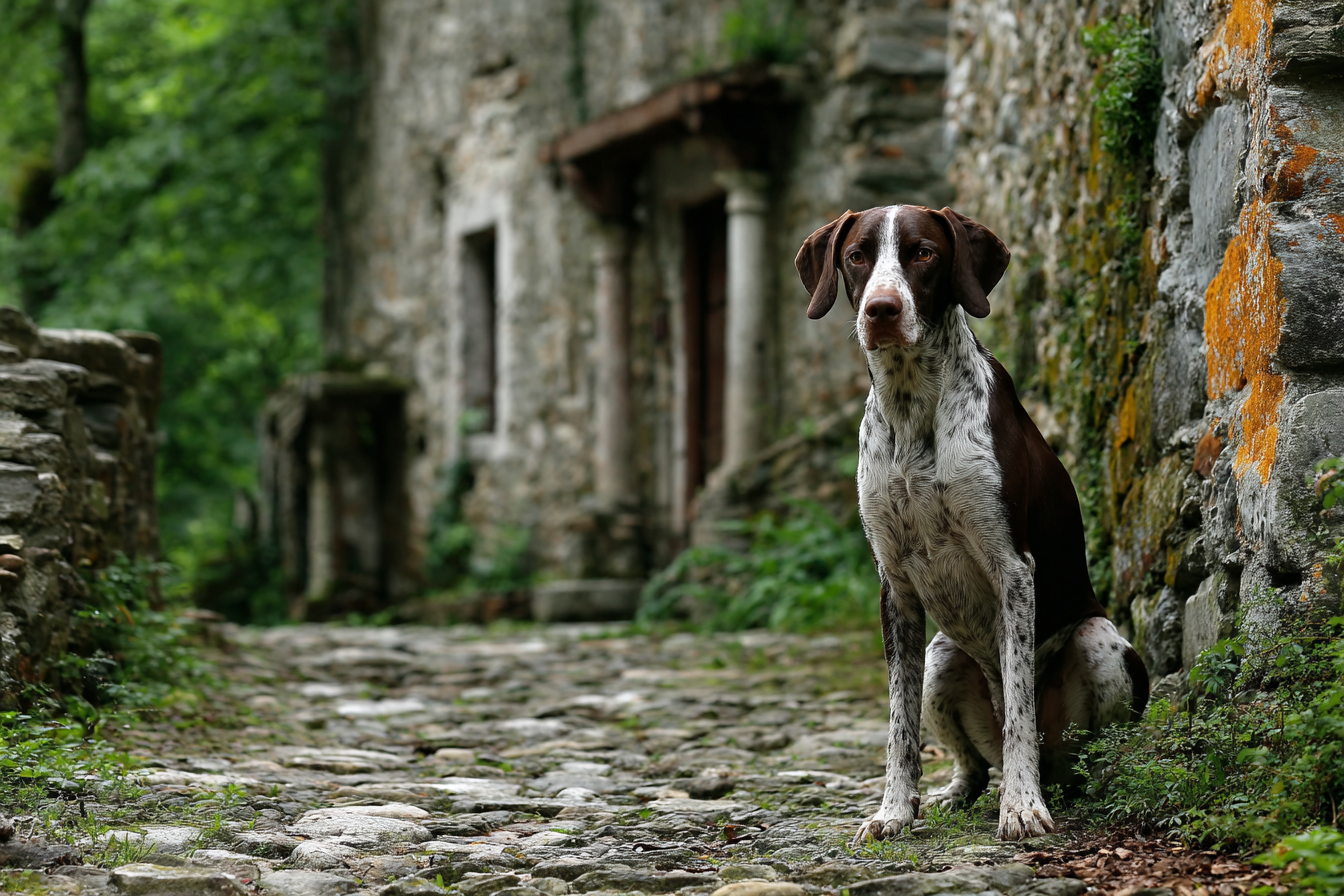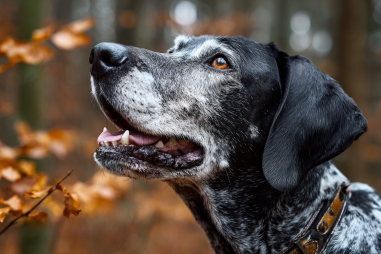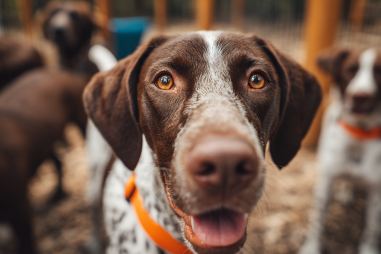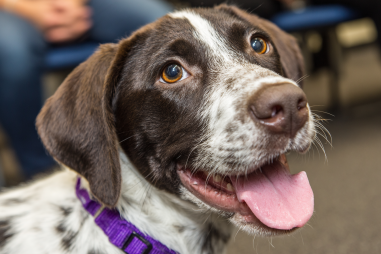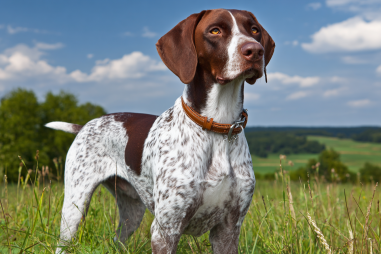The Pointer dog is a breed with a rich and captivating history that spans continents and centuries. Known for its keen sense of smell, athletic build, and steadfastness in the field, the Pointer has established itself as a remarkable hunting companion and beloved family pet. Tracing the roots of this exceptional breed reveals an intriguing story of selective breeding, hunting traditions, and cultural significance that continues to this day.
Early History and Ancestor Breeds
The history of the Pointer dog dates back several hundred years, with its origins closely tied to the hunting needs and practices of early European societies. Though pinpointing the exact ancestry of the breed is challenging, it is generally accepted that Pointers descend from various hunting dogs used in the Mediterranean regions, particularly Spain and Portugal, around the 17th century.
Some theories suggest that the Pointer’s ancestors were brought to the British Isles by Spanish and Portuguese sailors or traders, where they were bred with native hunting dogs. These early hunting dogs were valued for their ability to locate and “point” game birds by freezing in position when scenting prey, thus alerting hunters without startling the birds.
Ancestor breeds likely included regional pointers and setters, as well as perhaps Greyhounds or other sighthounds that contributed to the Pointer’s sleek, athletic build. The mixture of these breeds produced a dog with exceptional stamina, acute scenting ability, and the distinctive pointing stance that defines the breed today.
Development of the Breed Standard
The formal development of the Pointer as a distinct breed happened primarily in England during the 18th and 19th centuries. As hunting with firearms became increasingly popular, there was a demand for a versatile hunting dog that combined a strong sense of smell with physical endurance and steadiness in the field.
Breeders in England worked to standardize the characteristics of the Pointer, focusing on traits such as a short, smooth coat, powerful yet elegant build, and a natural pointing instinct. By the mid-19th century, the Pointer had emerged as a distinct breed with defined physical and behavioral standards.
The Kennel Club in the UK recognized the breed officially in the late 1800s, and breed clubs formed to promote and preserve the Pointer’s unique qualities. These efforts helped establish guidelines on appearance, temperament, and hunting aptitude—traits that continue to shape the breed’s identity today.
Role in Hunting and Fieldwork
Pointers have long been prized for their exceptional skills in hunting, particularly for upland game birds such as pheasants, quail, grouse, and partridges. What sets the Pointer apart is their natural instinct to “point” when they detect the scent of game: they freeze with body rigid and tail extended, directing the hunter’s attention to the exact location of the bird.
This technique greatly improved hunters’ efficiency and success, especially before the widespread use of shotguns with advanced sighting aids. Unlike some other hunting breeds, Pointers are reputed for their ability to work independently yet remain in constant contact with the hunter, covering ground with purpose and enthusiasm.
Besides pointing, these dogs are also skilled retrievers and have been trained to flush birds from cover, showcasing their versatility and intelligence. Their high energy and endurance enable them to work all day in rugged terrain, making them indispensable partners in the field.
Popularity Through the Centuries
The Pointer’s popularity has endured and fluctuated across centuries, reflecting broader changes in hunting practices and society. In the 18th and 19th centuries, Pointers were highly regarded among European aristocracy and hunters, symbolizing status and skill. Their efficiency led to widespread use across England, Scotland, and beyond.
As hunting traditions spread through the British Empire, the breed found homes in countries like the United States, Canada, and Australia. The Pointer quickly adapted to new environments and hunting conditions, further cementing its global reputation.
In the 20th century, with urbanization and changes in outdoor activities, the role of Pointers shifted somewhat from primarily hunting dogs to also cherished family companions. Their friendly temperament, intelligence, and loyalty have made them popular pets, while field trials and dog shows have kept their hunting qualities in focus.
Modern-Day Pointer Breeds
Today, the term “Pointer” most often refers to the English Pointer, the classic breed most closely aligned with the traditional hunting dog described historically. However, there are related Pointer breeds and variations, each with unique regional traits and breeding histories:
- English Pointer: The standard and most widely recognized breed, known for its athletic build and smooth coat.
- German Shorthaired Pointer: A versatile hunting breed developed in Germany by crossing Pointers with other hunting dogs for enhanced retrieving skills.
- German Wirehaired Pointer: Recognized for its dense, wiry coat, this breed was developed for more rugged terrain and weather conditions.
- Italian Pointer (Bracco Italiano): A distinctive pointing breed with a longer face and heavy build originating from Italy.
Despite these variations, all Pointer-type dogs share the hallmark pointing instinct and a strong connection to their hunting heritage. Breeders and enthusiasts continue to preserve these qualities while promoting health and temperament suited for modern lifestyles.
Cultural Impact and Symbolism
The Pointer has made a notable impact beyond the hunting fields, becoming an icon in culture and symbolism. In art and literature, the Pointer often represents qualities such as precision, loyalty, and alertness. Paintings depicting hunting scenes frequently include Pointers at the ready, emphasizing their integral role in traditional sporting life.
Moreover, the breed’s striking appearance and noble demeanor have made it a favored subject for photographers and filmmakers, highlighting its grace under both work and leisure conditions.
In some cultures, the Pointer is also considered a symbol of guidance and vigilance, given its instinct to signal the presence of game. This symbolism resonates with dog lovers who admire the breed’s unwavering dedication and intelligent nature.
Exploring the history and origin of the Pointer dog reveals a breed shaped by centuries of selective breeding, rich hunting traditions, and a deep cultural legacy. From its Mediterranean ancestors to the fields of England and beyond, the Pointer has evolved into a dog admired for its intelligence, athleticism, and faithful companionship. Whether as a skilled hunter or a cherished family member, the Pointer continues to inspire and captivate people around the world.

